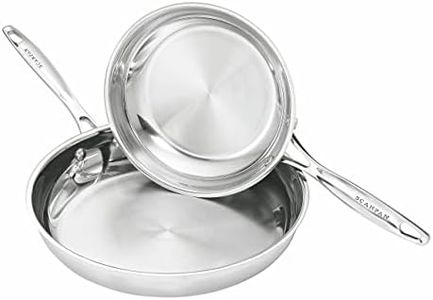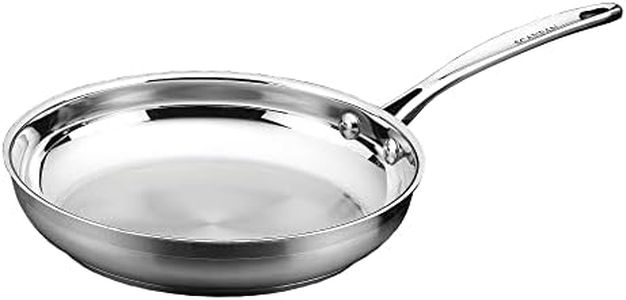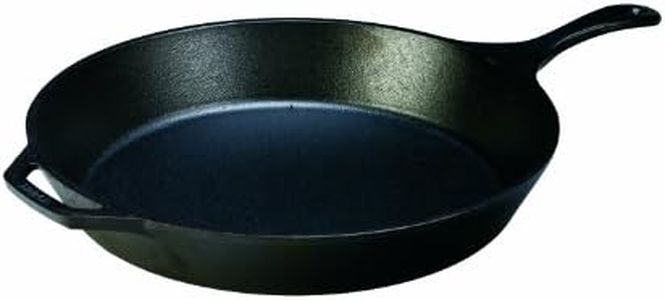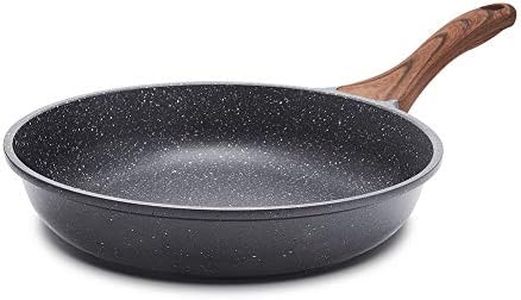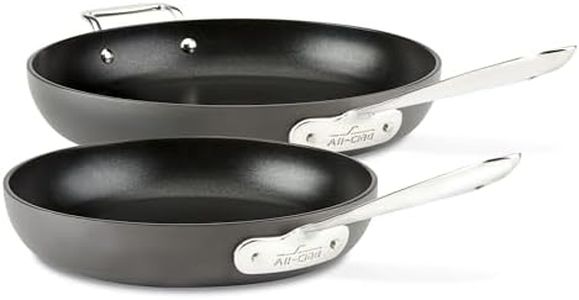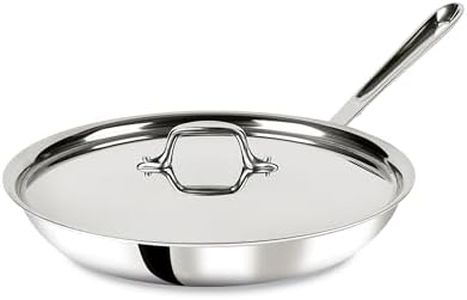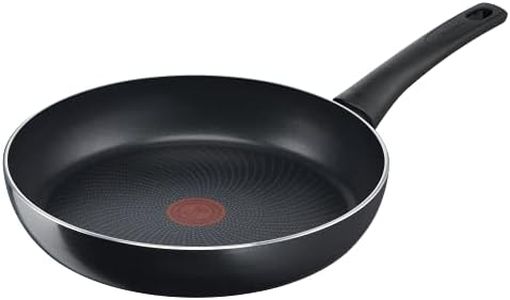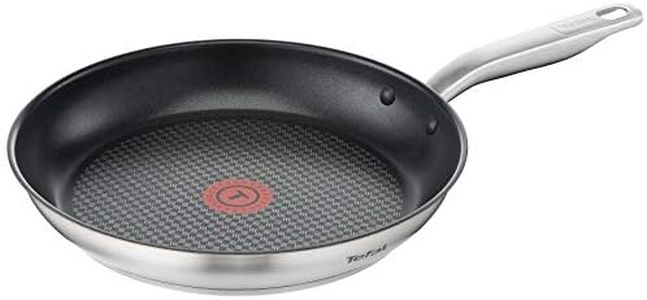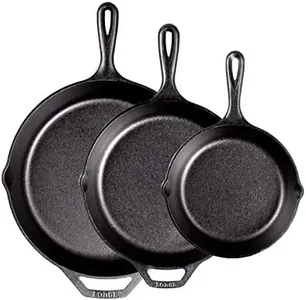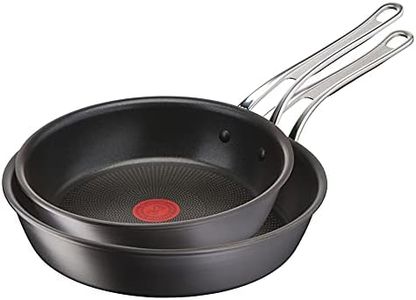We Use CookiesWe use cookies to enhance the security, performance,
functionality and for analytical and promotional activities. By continuing to browse this site you
are agreeing to our privacy policy
10 Best Omelette Pans
From leading brands and best sellers available on the web.Buying Guide for the Best Omelette Pans
Choosing the right omelette pan can make a big difference in how easy it is to cook delicious, evenly cooked omelettes at home. The best pan for you will depend on your cooking habits, what kind of omelettes you prefer, and how much effort you want to put into maintenance and cleaning. When you're shopping for an omelette pan, pay attention to a few key features that affect performance, ease of use, and durability.MaterialThe material of an omelette pan determines how evenly it heats, how quickly it heats up and cools down, and how easy it is to keep clean. Common materials include nonstick-coated aluminum, stainless steel, and cast iron. Nonstick pans are beginner-friendly and great for making delicate omelettes that won’t stick, but they may not last as long as metal pans. Stainless steel pans distribute heat well and last a long time but need more oil to prevent sticking. Cast iron pans hold heat very well and create a nice crust, but are heavier and require regular seasoning. The best choice depends on whether you value easy cleanup and quick cooking (nonstick), long-term durability (stainless steel), or traditional results and heat retention (cast iron).
Pan Size (Diameter)The diameter of the omelette pan directly impacts the size and thickness of the omelettes you can make. Pans generally range from about 8 to 12 inches. Smaller pans (8-9 inches) are ideal if you usually make single-serve omelettes or have limited stove space, as they help your omelette hold its shape. Medium (10-inch) pans are versatile—great for either a larger single omelette or two smaller ones. Larger pans (11-12 inches) are best for making omelettes to share or if you prefer bigger, thinner omelettes. Choose the size based on how many people you usually cook for and how thick or thin you like your omelettes.
Shape and Slope of SidesThe sides of the pan can be straight or sloped. Sloped sides make it much easier to slide the omelette out and also help with folding it neatly. Straight-sided pans might be better for scrambled eggs or other recipes, but for omelettes, a gentle slope is usually preferred. If flipping and rolling your omelette smoothly is important to you, look for a pan with sloped sides.
Handle Design and LengthA good omelette pan has a handle that stays cool and is long enough for you to maneuver the pan easily, especially if you plan to flip or fold the omelette in the pan. The material should be comfortable and heat resistant. If you plan to finish omelettes in the oven or under a broiler, make sure the handle is oven-safe.
WeightThe weight of the pan has an impact on ease of handling and cooking performance. Heavier pans (like cast iron) retain heat well and can help the food cook more evenly, but can be difficult to lift and maneuver, especially when tilting the pan to slide out your omelette. Lighter pans (like aluminum nonstick) are easy to handle and move, which is helpful for flipping or sliding out delicate omelettes, but may not cook as evenly. If you have strength limitations or want something easy to handle, a lightweight pan could be best for you.
Compatibility with StovetopsNot all pans work efficiently with every stove type. Some pans work well with gas and electric ranges but may not work with induction cooktops. If you have an induction stove, check that the pan is labeled as induction-compatible, usually meaning it has a magnetic base. Choose a pan suitable for your type of kitchen stove, otherwise heat distribution or performance may suffer.
Ease of CleaningCleaning convenience depends on both the material and whether the pan has a nonstick coating. Nonstick pans are generally the easiest to clean because food shouldn’t stick, but they can’t always go in the dishwasher and require careful handling to avoid damaging the coating. Stainless steel and cast iron pans might be tougher to clean if food gets stuck, but they are more durable for scrubbing once seasoned. Think about how much effort you want to spend cleaning up after cooking when choosing your ideal pan.
